20 Biology Books for Beginners
The phenomenon of the emergence of life is something that as human beings arouses interest in us, either to understand what surrounds us or to know how our own body works.
In fact, if we think and act as we do, it is because our organism has arisen through a biological process: evolution. Our psychological dimension can also be studied from the point of view of biology. This selection of biology books may be helpful for those interested in delving into the science that studies life.
Recommended Biology Books
Biology is a science as complex as life itself, which is why it branches into a multitude of disciplines to get the most out of the subject. In fact, some of these branches have strengthened strong ties with other sciences that have ended up generating other already independent disciplines, such as biochemistry or paleoanthropology.
One of the ways to increase our knowledge independently is by reading texts that expand our knowledge of the various topics related to this science as wide. Here I present a selection of manuals, books and dissemination texts with which we can cover different topics of interest in modern biology without the need for great knowledge previous.
And all of them are biology books in Spanish.1. Biology for Dummies (René Fester Kratz and Donna Rae Siegfried)
The "Biology for Dummies" book is ideal for an introduction to biology in a general way, with a clear, easy and well organized text so that any reader understands the fundamentals of the science of life. Ideal if you are not looking for anything specific in the matter.
- On this link you'll find it.
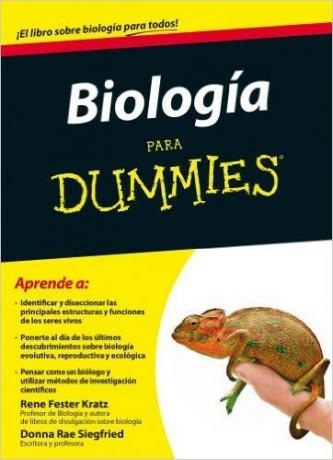
2. The cell (Geoffrey M. Cooper and Robert E. Haussman)
For many, this biology book is the quintessential manual for getting fully into the knowledge of the unity of life, that is, the cell. It is characterized by a simple and clear use of language and by being supported by a multitude of graphics and drawings that facilitate the understanding of the explanations. With each edition, it draws on new advances in the field of cell and molecular biology, disciplines that are rapidly expanding.
- You can learn more about this book here.

3. Genome: The Autobiography of a Species in 23 Chapters (Matt Ridley)
Matt Ridley's work is a good way to get into the fundamentals of genetics in aspects such as inheritance or DNA replication, since it presents it with a pleasant language and from the point of view of a journalist, who investigates and corroborates the information with real experiments carried out, in order to obtain conclusions to help understand terms that are difficult to understand on their own alone. That it contains 23 chapters is not a coincidence, since it represents the 23 chromosomes that humans have in their genetic code.
- If you are interested in this work, you can read more about it clicking here.

4. The chosen species: the long march of human evolution (Juan Luis Arsuaga and Ignacio Martínez)
The human evolution it is a thorny, complicated and complex issue. But this book on evolutionary biology is written in such a way that it makes the subject seem very simple. A well-known text that is already a few years old, although it is so well written that it has become a popular popularization classic. Reading becomes enjoyable and easy to understand without renouncing all the rigor expected of two renowned researchers on the subject, who have been working at Atapuerca for so many years.
- More information about the book is available in this link.
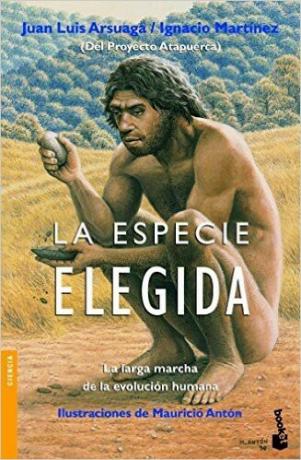
5. The Selfish Gene (Richard Dawkins)
What are we? Where we come from? Where are we going? More than once we have asked ourselves these questions, and zoologist Richard Dawkins gives us his answer with this book that presents evolution from a different point of view: focusing on the behaviour. With this work, Dawkins offers us the biological basis of animal and human behavior, and how evolution has been partly to blame for its development.
- On this page there is more information about the book.

6. Introduction to Botany (Murray W. Nabors)
Murray W. Nabors is an American botanist who also teaches biology classes and who he looked for a way to pass on his knowledge of the plant kingdom. And that's how Introduction to Botany was born, a very educational biology book on this branch of life science, mainly focused on higher plants; that is, in grasses, shrubs, and trees.
- You can find it here.

7. Plant physiology (Lincoln Taiz, Eduardo Zeiger)
If in the previous biology book we talked about botany at a taxonomic level, "Plant Physiology" focuses on how the different tissues that make up plants are structured. A didactic text, with a multitude of illustrations so as not to lose detail of the knowledge that its reading wants to transmit.
- If you are interested in this reading, here you can know more about this book.

8. Comprehensive Principles of Zoology (Cleveland P. Hickman Jr., Larry S. Roberts, Allan Larson, Helen I'Anson, and David J. Eisenhour)
This manual presents the basic knowledge of the discipline called zoology. He speaks of both the biology of invertebrates and vertebrates in general, with a language understandable and didactic for understanding the principles of the study of the animal kingdom.
- Is it availabe in this link.

9. Principles of Animal Physiology (Christopher D. Moyes and Patricia M. Schulte)
Zoology does not explain everything about animals, as it happens with botany, since it is accompanied by animal physiology. This biology book by Moyes presents in a didactic way the basic principles to understand the study of the structure of the different animals and the vital processes that keep them alive and adapted to their half.
- You can consult more information about this work here.

10. Your inner fish: 3.5 billion years of human body history (Neil Shubin)
This work tries to explain to us in an easy way how our body has come to be what we know today through 3.5 billion years of evolution. For this, the author makes an anatomical comparison with other species of living beings. This biology book was born from the discovery that the author of the text made with his team of the fossil Tiktaalik roseae, a fish with limbs, which was the meeting of the way of life that helps to understand the passage from the sea to the land of our ancestors.
- You can get it here.
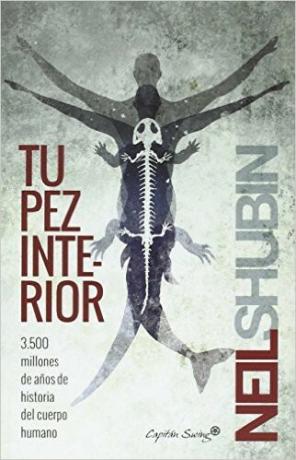
11. Microbiology (Lansing M. Prescott, John P. Harley, Donald A. Klein)
Microbiology is an excellent manual to introduce ourselves fully into the world of microorganisms. A work that is recommended for both biology and medicine, since it not only deals with the structure, function and classification of bacteria and so on, but also deals with diseases caused by them when they act as parasites.
- In this link you have more information about it.
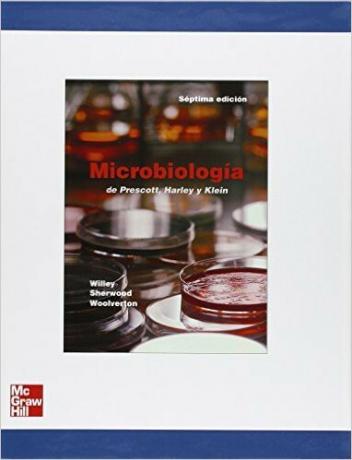
12. Virus and pandemic (Ignacio López-Goñi)
Viruses have always been present in the history of mankind. The author of this book presents us in an informative, simple and illustrative way what a virus is, its transmission mechanisms and its existence within cells. In addition, he also addresses a topic related to viruses: pandemics.
- Here there is more information about the book.

13. Ecology. Individuals, Populations, and Communities (Michael Begon, John L. Harper, Colin R. Townsend)
The environment is a subject of great importance, and more in recent times. Although ecology is a rather complicated science, Begon and company set themselves the goal of write a biology book introducing the study of the environment to the curious and new to the matter.
- You will find the book in Spanish here.

14. Lehninger. Principles of Biochemistry (David L. Nelson, Michael M. Cox)
Biochemist Albert L. Lehninger wrote this work for the first time in 1970, creating an introductory manual to the discipline in which he was a participant, biochemistry. This is the science that studies chemistry within living things, as for example in the analysis of proteins and their functioning. It was so well presented and had such understandable and didactic content that it continues to be updated today up to date with the latest discoveries, even though its original author is no longer a participant in the new content.
- If you have an interest in it, this link it will help you know more about the work.
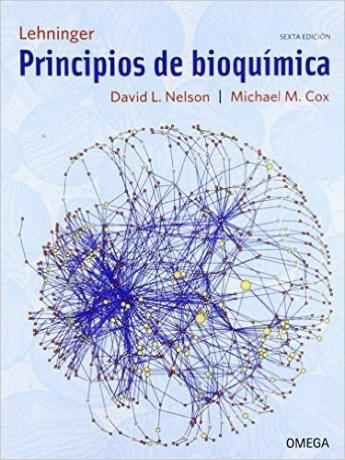
15. How does the brain work? (Francisco Mora)
Francisco Mora, professor in human physiology at the Faculty of Medicine of the Complutense University of Madrid, presents us with easy language and pleasant reading the complicated world around the study of the brain. Although it is not properly a biology book, it does deal with a closely related topic: neuroscience. The nervous system is a subject of interest to biologists, as well as being a fundamental part of the life of the most complex organisms.
- You can find it here.

16. Evolution: The Greatest Show on Earth (Richard Dawkins)
In this book, famous popularizer Richard Dawkins talks about how biological evolution works with a feeling of fascination that is contagious.
- To know more about the book, Click here.
17. Junk DNA (Nessa Carey)
A good book to understand the functioning of DNA, the "architectural plan" of living beings that is inside our cells, no matter how different their functions are.
- If you want to read more about this work, go to this link.
18. The Ghosts of Evolution (Connie Barlow)
A very interesting book about rarities of nature that seem to have been anchored in the past millions of years ago and that still survive today. It is a journey through species that appeared a long time ago and that tell us about ancient times.
- If you are interested, you will find more information about the book here.
19. Beyond biofatalism (Gilliam Barker)
This book presents a cross between biology and philosophy on a fascinating subject: our genes we predestine to create societies that are not very inclusive and based on the satisfaction of our needs individual?
- You can know more about him here.
20. The birds, field guide (Àngels Julivert)
An excellent book to start learning about the fascinating world of birds, very useful to start to recognize them in flight and distinguish the characteristic attributes of the most common species and known.
- To know more about this work, Click here.


